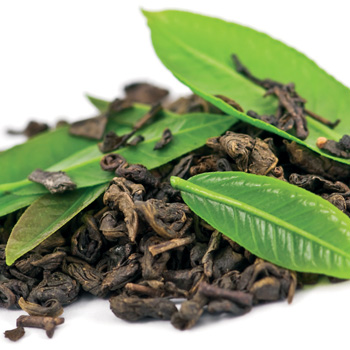Food laboratories continue to be asked to meet lower detection limits over a wider range of compounds and matrices. Governmental regulating agencies are adding more compounds and lowering the maximum residue limits (MRLs) for those already in existence. MRLs are safe limits that restrict the maximum levels of a pesticide present on a food commodity after appropriate and authorized use of that pesticide.
A typical workflow consists of sample preparation, extraction and instrument analysis. A key factor in improving sample throughput and providing a robust analysis begins with sample extraction and concentration.
Solvent consumption and extraction time can be reduced significantly by the use of solid-phase microextraction (SPME). SPME is a fast and simple sample preparation method where the use of solvents is not necessary and detection limits approach parts per trillion (ppt) levels. The application of SPME can also eliminate one of the traditional extraction steps.
This article will highlight an in-line sample extraction and concentration technique for multi-residue pesticide analysis coupled with a Thermo Scientific TSQ Quantum XLS triple quadrupole gas chromatography-mass spectrometer/mass spectrometer (GC-MS/MS) that can perform both screening and confirmation using selected reaction monitoring (SRM) or multi-reaction monitoring.
The TSQ Quantum XLS™ delivers femtogram-range limits of detection while improving laboratory efficiency and throughput. The robust design of the system offers greater flexibility, high-speed data acquisition and more sample runs.
Experimental Conditions
Green tea can be used to demonstrate a matrix that has a large number of interfering compounds.
Analysis is optimized using a Thermo Scientific TRACE GC Ultra with a programmed temperature vaporizer (PTV) inlet, a TriPlus™ autosampler configured for SPME, sold under license from Supelco®, and TSQ Quantum XLS GC-MS/MS.
Chromatographic separation is achieved with a Thermo Scientific TR-Pesticide II 30 m × 0.25 mm × 0.25 µm column with a 5m guard column. The guard column was placed through the transfer line and into the source of the MS.
Sample Preparation
The first step is to prepare the sample by homogenizing dry tea leaves in a blender. One gram of sample is weighed into 20-mL volatile organic analysis vials. An aliquot of the internal standard solution was added. After the addition of the standards to the dry tea, 3 mL of a 1% methanol solution saturated with NaCl is added. The vial is then capped, gently swirled and placed in the autosampler rack.
SPME Conditions
A 100-µm polydimethylsiloxane fiber is recommended for this experiment. The fiber is exposed to the headspace of the vial, while the sample was agitated and heated to 90 °C. After 30 minutes, the fiber is placed into the inlet and desorbed for 6 minutes.
Injection
The injection is performed utilizing a PTV inlet. The initial injection temperature was 75 °C and ramped to 250 °C at a rate of 2.5 °C/second, held for 3 minutes, then increased to 280 °C at 14.5 °C/second and held for 20 minutes.
Separation
Chromatographic separation can be achieved using the TR-Pesticide II, a 5% diphenyl/95% dimethylpolysiloxane column. The guard column is inserted through the transfer line into the source of the MS, thus reducing column bleed. The GC oven program is as follows:
• Initial temperature: 90 °C, 5.0 min.
• 25 °C/min. to 180 °C
• 5°C/min. to 280 °C
• 10 °C/min. to 300 °C
• Final hold time of 2 min.
Detection
Tea contains large amounts of aromas, flavors and polyphenols as well as caffeine that can interfere with the detection and identification of the pesticide residues.
SRM is a vital analysis technique for a triple quadrupole analyzer:
1. The first quadrupole, Q1, isolates one mass. This is the precursor ion. This is the same process that is used in a single quadrupole in selected ion monitoring mode.
2. The second quadrupole fragments the structure of the selected precursor ion.
3. In the third quadrupole, the fragments from Q2 are mass analyzed. One of the product ions is selected for detection.
After retention times are determined in full scan, a timed-SRM method can be constructed to analyze the compounds. Calibration curves should be analyzed in individual vials to prevent the SPME fiber from becoming saturated.
Results
The calibration standards resulted in a calibration curve from 1 to 2,000 ng/g (ppb). The linearity for most compounds was r2 greater than 0.995. Detection limits from the calibration curve demonstrate results at levels at or below those required by international regulators for most compounds.
The TSQ Quantum XLS paired with the TRACE GC Ultra delivers excellent results at low concentrations for the pesticide residues analyzed in the green tea following in-line SPME sample preparation. Using the instrument’s SRM functionality allows the user to identify, confirm and quantify a wide range of concentrations in one analysis. Calibration curves for most of the pesticides studied meet a linear least squares calibration with a correlation coefficient of r² greater than 0.995. One or two ion ratios can be used to confirm each pesticide. The TSQ Quantum XLS is able to meet the international regulatory requirements for low-level detection, confirmation and quantitation for the analysis of pesticides in matrices without the need for manual extraction techniques.
www.thermoscientific.com/quantumxls
Using SPME and GC-MS/MS to Measure Pesticides in Green Tea


